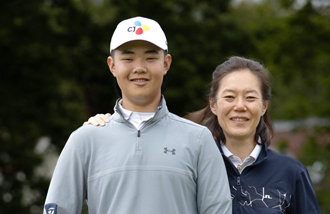S. Korea, U.S. agree to maintain current combined command structure
S. Korea, U.S. agree to maintain current combined command structure
Posted June. 03, 2013 00:33,
South Korea and the U.S. agreed to maintain the current combined command structure after the transfer of wartime operational control to Seoul. A "Combined Theater Command" will be newly established to replace South Korea-U.S. Combined Forces Command, with the South`s Joint Chief of Staff chairman taking charge and top U.S. commander in South Korea serving as deputy commander. Since the wartime control transfer and breakup of combined forces command were postponed to 2015 from 2012, South Korea encountered resistance by reserve force admirals as North Korea`s nuclear threats heightened. It is good that decisive deterrent forces are maintained to respond to the North`s provocations. Security uncertainties that could occur if South Korea and the U.S. operate their own commands after the wartime control transfer have been also eased.
The late former President Park Chung-hee at the South Korea-U.S. Combined Forces Command opening ceremony on Nov. 17, 1978 said, "The launch of the South Korea-U.S. Combined Forces Command reflects both countries` firm determination to prevent the repeat of war on the Korean Peninsula. The combined forces command had actually contributed much to restraining North Korea`s provocations and South Korea`s achieving economic prosperity. The late former President Roh Moo-hyun`s decision to transfer wartime control and break up the combined forces command was wrong amid continuing threats by the North. It must be Pyongyang that would welcome the breakup more than anyone else. As this year marks the 60th year of ties between the two countries, the agreement by Seoul and Washington to maintain the current combined command structure is truly meaningful.
South Korean Defense Minister Kim Gwan-jin and U.S. Defense Secretary Chuck Hagel said Saturday that North Korea`s provocations will not be tolerated in any case, adding stronger alliance is needed to enhance defense capabilities to overwhelm North Korea. The two defense heads had planned to finalize the new combined command structure at the Shangri-La Dialogue, but judged that supplementations should be made and thus postponed it to October this year when the Security Consultative Meeting will be held in Seoul. Thorough examination and sufficient discussion should be made to solidify security collaboration between Seoul and Washington.
When the Combined Theater Command is launched, U.S. military will be under command by other country`s military for the first time. Some within the U.S. government and Congress thus have negative views on this. Though an unprecedented attempt, it still makes sense considering that South Korea should play the leading role in defending the Korean Peninsula. South Korea should endure the burdens that command changes. In the event of the transfer of wartime operational control, the longstanding South Korea-U.S. alliance should move beyond a passive goal to block North`s provocations and evolve into a future-oriented relationship for reunification.





